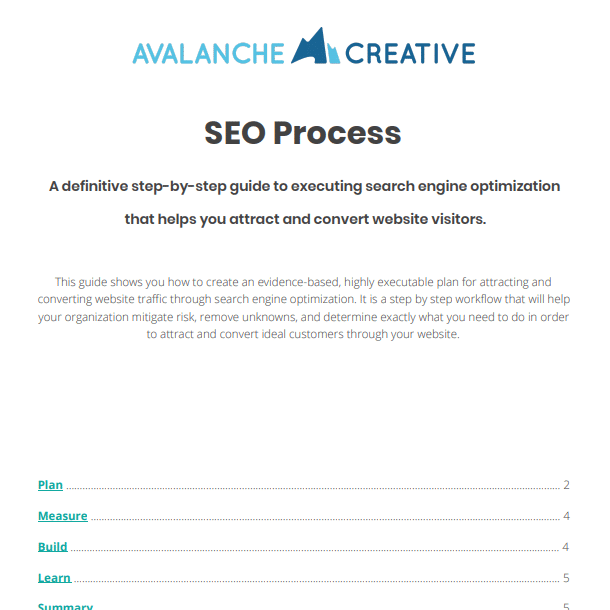The Anatomy of Page that Ranks
Category: Search Engine Optimization | Tags: avalanche email, seo analogy
Learn More and Subscribe to The Avalanche Weekly Email
If you asked a doctor to tell you how your body works, they’d likely need to start with a certain organ and then explain how that organ relates to other organs.
INTERESTING FACT: For an adult human, taking just one step uses up to 200 muscles – our bodies are complex!
There’s a lot you could talk about when it comes to how our bodies work.
However, it’s likely that when someone asks such a broad, in-depth question (of which thousands of books have been written about) that they may be more interested in a certain sub-topic, like how the brain, heart, or lungs work.
The anatomy of a web page that ranks and brings in valuable traffic isn’t all that different than how our bodies work (for the sake of this anatomy analogy).
Let’s use the topic of “mindfulness” as an example:
- 110,000 searches per month in the US for just that single keyword
- Mindful.org has the number 1 and 2 positions in Google
- The number one result is “Getting Started with Mindfulness“
Taking a look at the anatomy of that page, it doesn’t surprise me that it’s number one.
- The entire site is about mindfulness and the domain is even mindful.org – meaning the entire site is likely “on-topic”
- Google is looking at that single keyword, “mindfulness” and asking, “what does this person want?” Recommending a “Getting Started” resource makes sense because the searcher hasn’t made it clear what they are looking for. The topic of mindfulness is large, so “what is they want to know about it?“
Looking at the page, we see all kinds of different “organs,” or sub-topics working together to make up a body of a functional resource on a large topic:
- How-to-guides
- Videos
- Audio guided meditations
- Many links to additional resources on mindfulness
So what does this analogy and example have to do with you?
If you want to become the number 1 result on your topic(s), you need to consider the entire body of your topic.
Provide the most thorough and well-organized resources and think of each page on your site as a body.
What you include on each page are organs. If you’re missing helpful information, you’ve got a body without an organ.
And a body without an organ doesn’t function well.
Share this article:
The Avalanche Email: Fun. Simple. Educational. No Selling.
Learn Result-focused SEO & Content
Join over 2,272+ others who get one email every Wednesday with simple instructions on how to get more website traffic and leads through SEO and content marketing. (Learn more about the email)
Keep Learning
How To Show Up in Gemini (And Win More Local Jobs)
Show up in Gemini when homeowners search for landscaping services. Build the right signals on Google and your website to win more qualified local jobs.
How to Run Google Ads for Landscapers: A Complete Guide
Learn how to set up Google Ads for landscapers, attract qualified leads, and win more local jobs with this step-by-step guide.
🏔️ Watering > Planting New Seeds
Your next marketing win may already be on your site. Learn how to optimize existing pages for better rankings, traffic, and results.
The Recipe vs. The Meal
Your customers buy the experience, not the product. Discover a simple way to shift your message from ingredients to the full meal.
🏔️ Hook, Line, and Sinker 🎣
Use this fishing framework to turn your posts into stories that capture attention, create tension, and inspire action from your audience.
🏔️ Avoid Everything That Doesn’t Move You Forward
Stop chasing shiny tools and refocus on what moves your marketing toward the end zone. Simple steps to cut noise and make steady progress.





